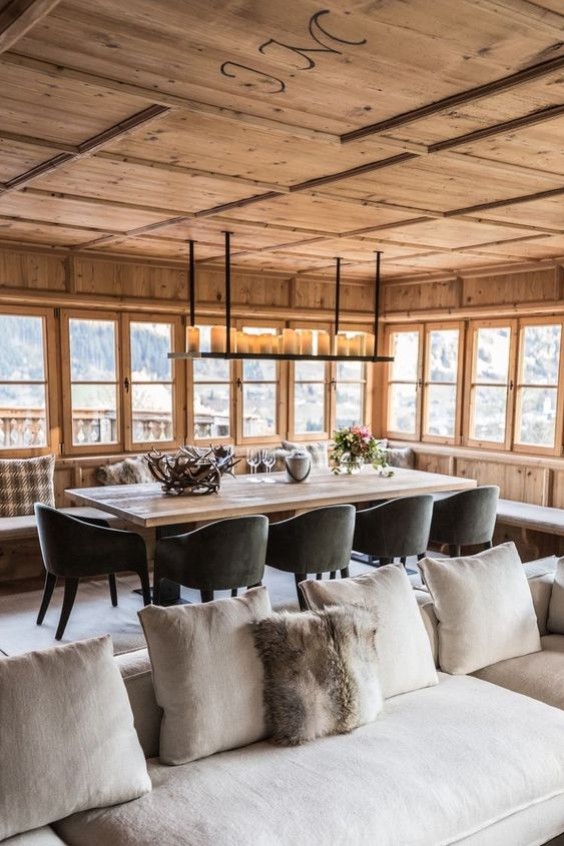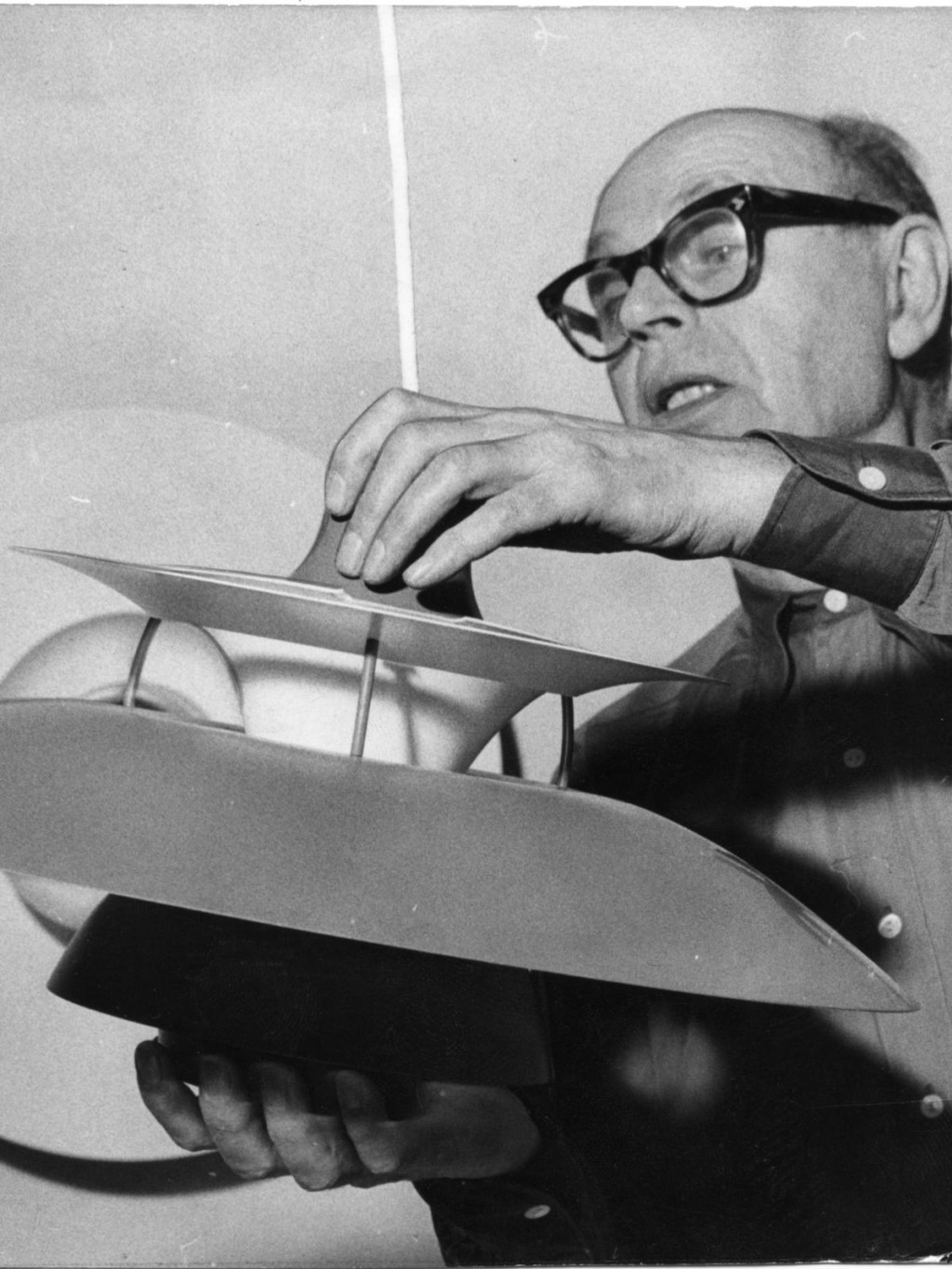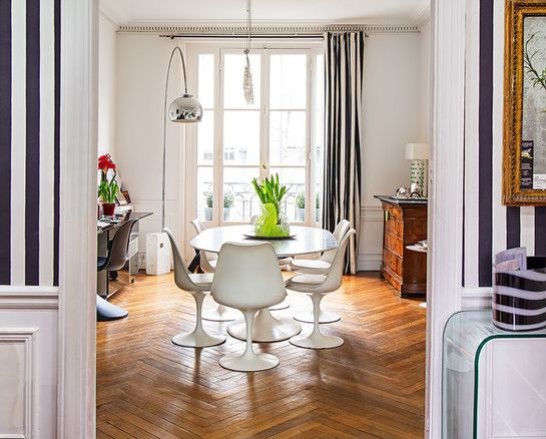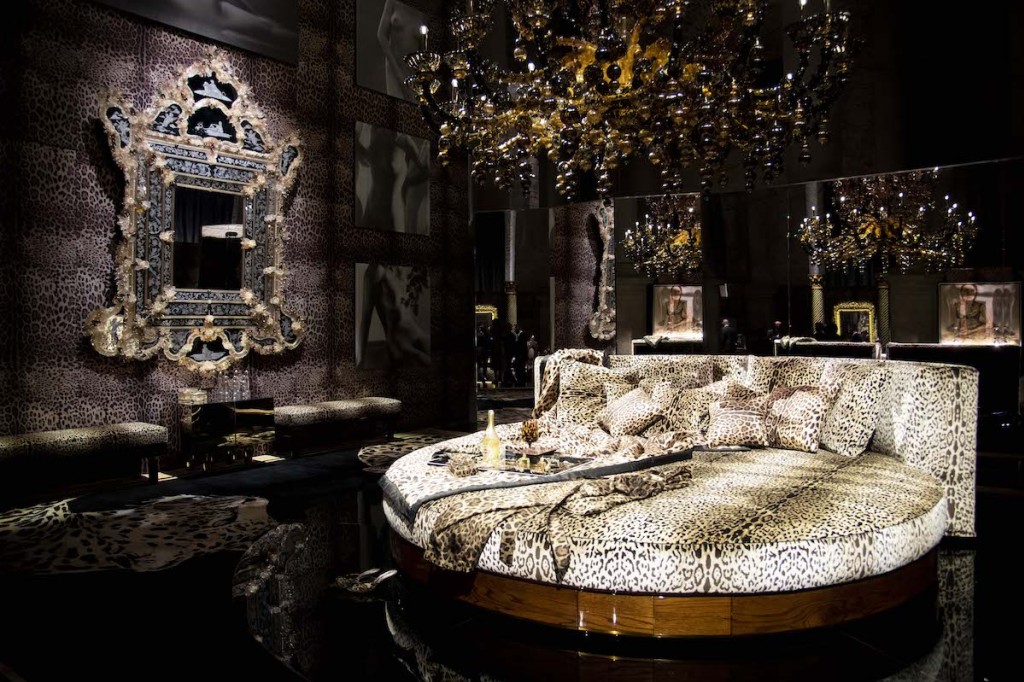How to continue to embody the elegance and modernity of the chair? This is indeed the question that must be asked daily by the directors of German chair and furniture design manufacturer Thonet GmbH, historical heirs of the famous Thonet brand (Gebrüder Thonet), created in Vienna in 1853 by German-Austrian cabinetmaker and industrialist Michael Thonet (1796-1871). The name Thonet is inseparable from the history of design, since the German manufacturer embodies 2 major revolutions in the history of furniture: the manufacture of chairs in bent wood and the manufacture of tubular steel seats without legs at the back during the Bauhaus era. This article looks back at an industrial history that began 170 years ago and continues to be written ...
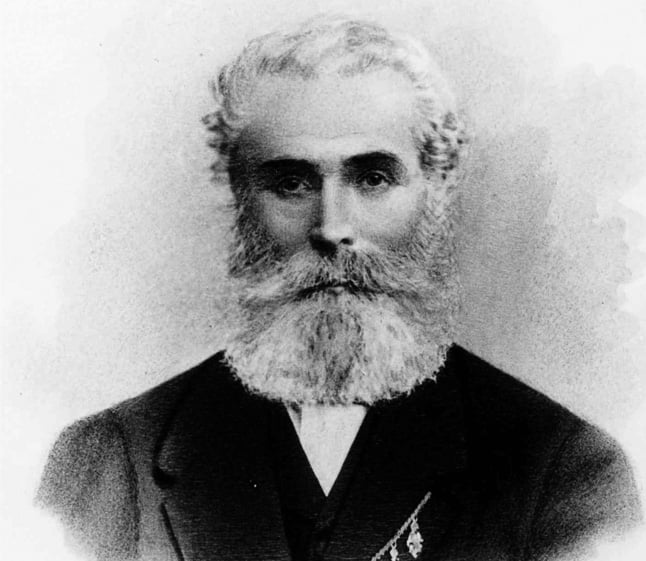
Michael Thonet was born on July 2, 1796 in Boppard in the electorate of Trier, an ecclesiastical principality of the Holy Roman Empire. A cabinetmaker, he created a small furniture company in 1819 before moving to Vienna in the 1940s, at the request of Prince Clemens Metternich, Chancellor of Austria. The latter allowed him to present the quality of his craftsmanship to the Emperor of Austria, King of Hungary and King of Bohemia, Ferdinand I. In 1853, Michael Thonet transferred the company "Thonet" to his sons under the new name "Gebrüder Thonet". In reality, it was already a few years that he thought about the mass industrialization of furniture and developed techniques to bend wood.
In 1851, Michael Thonet developed and mass produced the famous chair No. 14, known as "bistro chair" to meet the demand of the Daum Café, which wanted "practical, elegant and space-saving chairs".Michael Thonet then succeeds in a stroke of genius for 3 reasons. 1) Chair n°14 is the first chair to be mass produced in the history of design. Its conception, relatively simple, allows to divide the work: 6 pieces of wood, 10 screws and 2 nuts, in all 18 elements, and the turn is played! It is easy to assemble, disassemble and transport. 2) Michael Thonet invented the furniture kit almost a century before IKEA: the industrialist sent his chairs in a 1 m3 box that could hold up to 36 chairs! 3) Finally, he definitively perfects the technique of bending solid wood, which allows him to curve the wood to obtain a piece with sleek shapes.
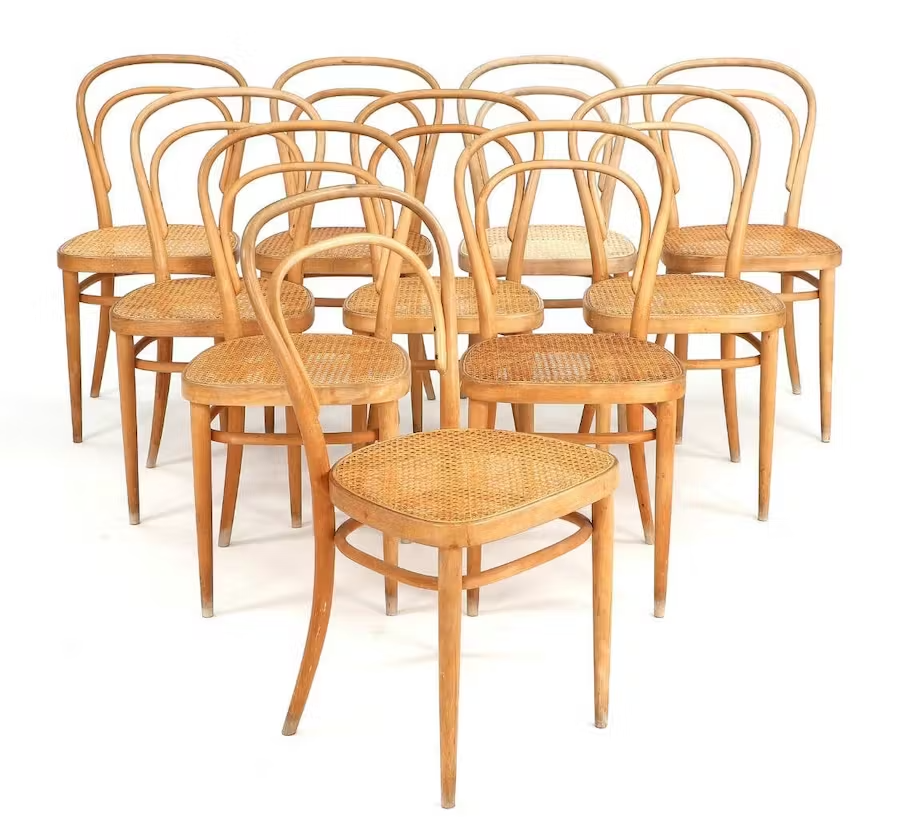
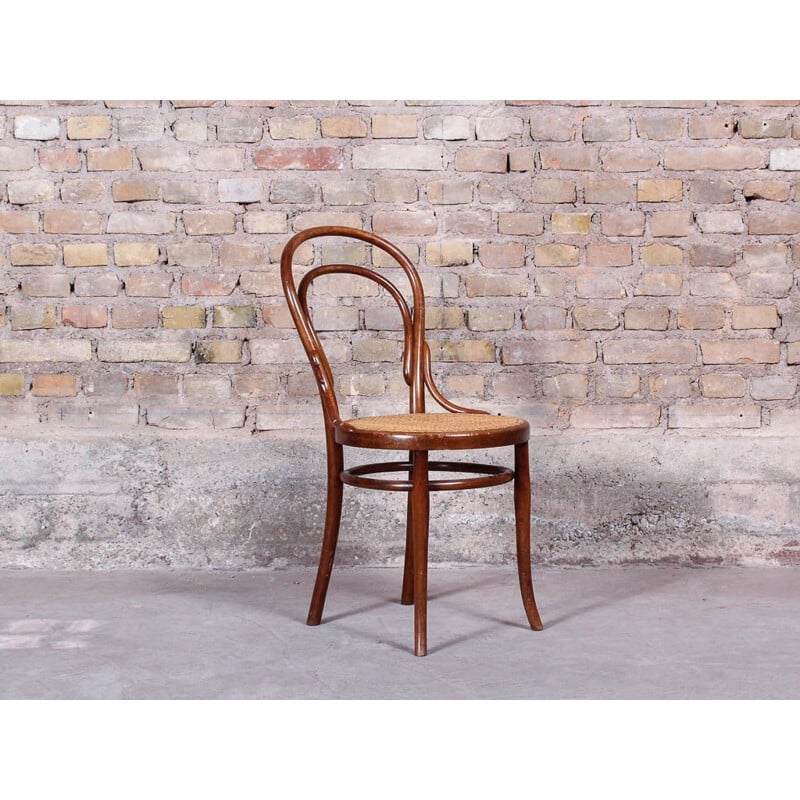
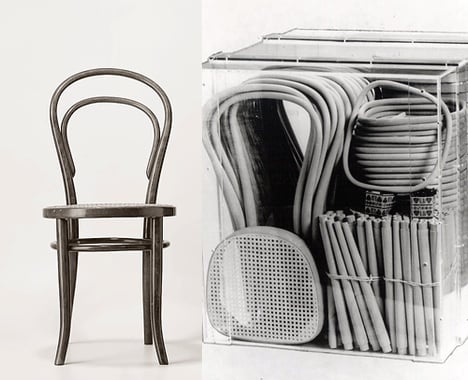


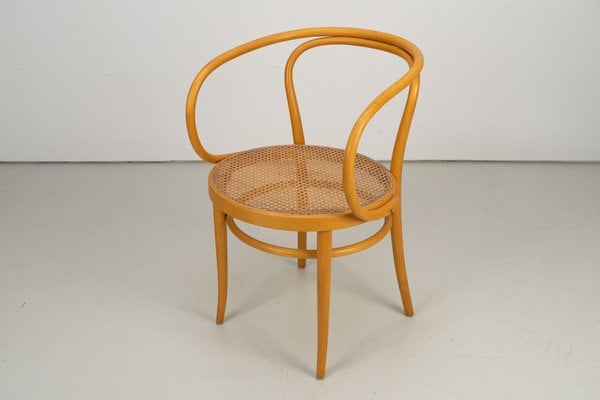
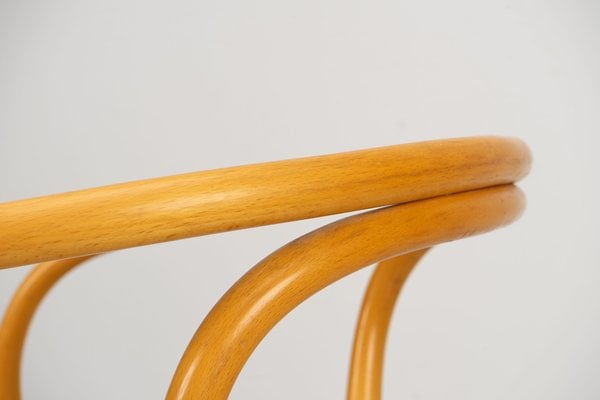
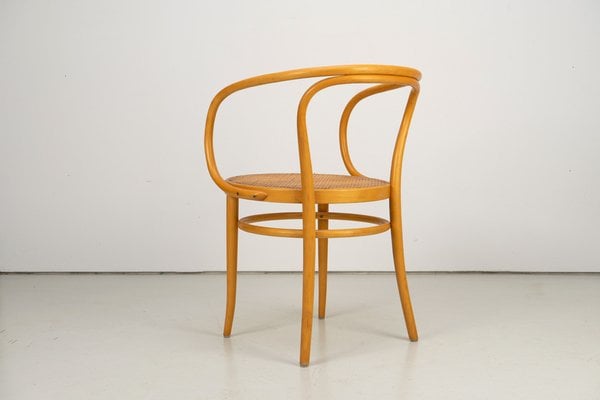
To bend wood, Michael Thonet is the inventor of a revolutionary process. He exposes the wood to steam under pressure, which makes the cellulose more elastic and the lignin softer. Made elastic, it is now possible to bend the wood along its fibers. After drying, it acquires a new stable and resilient shape.
Repeated, these operations allow for large-scale manufacturing that guarantees Thonet seats an excellent price/quality ratio. In 1912, the manufacturer's production reached a peak: almost 2 million different products were assembled every day in the group's factories (Moravia, German Empire and Eastern Europe).
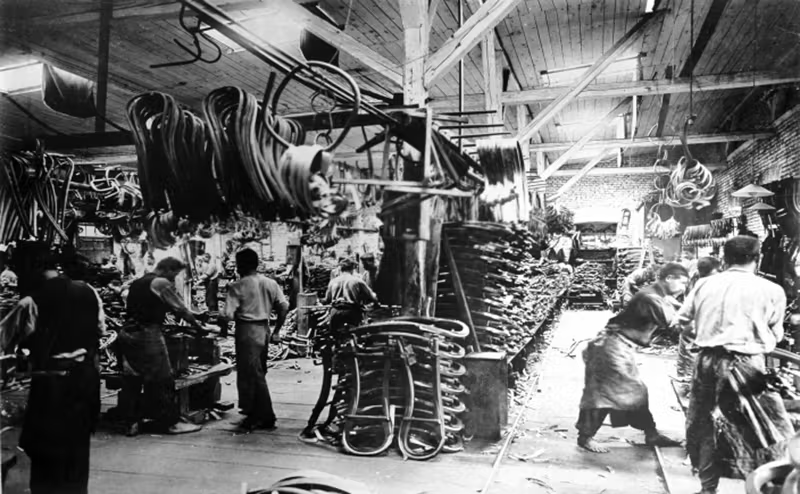
Industrial empire, Thonet experienced upheavals, but it would never disappear. Since 1876, the house is divided into 2 companies: a German company (Gebrüder Thonet) which becomes in 2006 Thonet GmbH, and an Austrian company (Thonet Vienna). The descendants of Michael Thonet remain associated with the business of the German company, as shareholders and business partners. Like other historical publishers, Thonet has been able to preserve its technical know-how by associating it with the elite of modern and contemporary designers. Examples include Verner Panton with the realization of the iconic Model 275 (S-Chair, 1965), or James Irvine who revisits, 150 years later, the chair No. 14.
.png)

Thonet also made design history in the 1920s and early 1930s. A time when a new generation of architects and artists boldly and radically shook the theoretical and aesthetic canons inherited from Art Nouveau and Art Deco. The development of new materials such as steel and new assembly techniques revolutionizes the design of the time.
Thus, Thonet buys in 1928 the firm Standard-Möbel, originally founded by Marcel Breuer, and dedicated to the manufacture of tubular steel furniture. This new process gave birth to the invention of the cantilever chair, a cantilever chair without back legs. Thonet then became and has remained since the publisher of legendary models, such as Mart Stam's Cantilever S 33 chair, or Marcel Breuer's S 35 L armchair.
.png)
.png)
François Boutard

